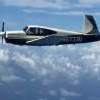Intermittent Rough Engine / High EGT need help diagnosing
-
Members Online
- DMM
- Rick B
- Ethan
- Neshi
- 1967 427
- Marc B
- pirate
- HERVE
- Air pirate
- Bunti
- EricJ
- Ibra
- Todd423
- jamesyql
- BillyT0020
- MB65E
- Brian2034
- KLRDMD
- TravelingIA98
- jetdriven
- mattlezeay
- sdmideas
- M20S Driver
- bigmo
- masouds
- McMooney
- TCC
- Stephane Blard
- Sue Bon
- Stealth Mooney
- Crawfish
- exM20K
- AviH
- Hank
- Cody Stallings
- GeeBee
- Brandt
- Rick Junkin
- IFLYIFR
- 1980Mooney
- 201Steve
- toto
- brad


Recommended Posts
Join the conversation
You can post now and register later. If you have an account, sign in now to post with your account.